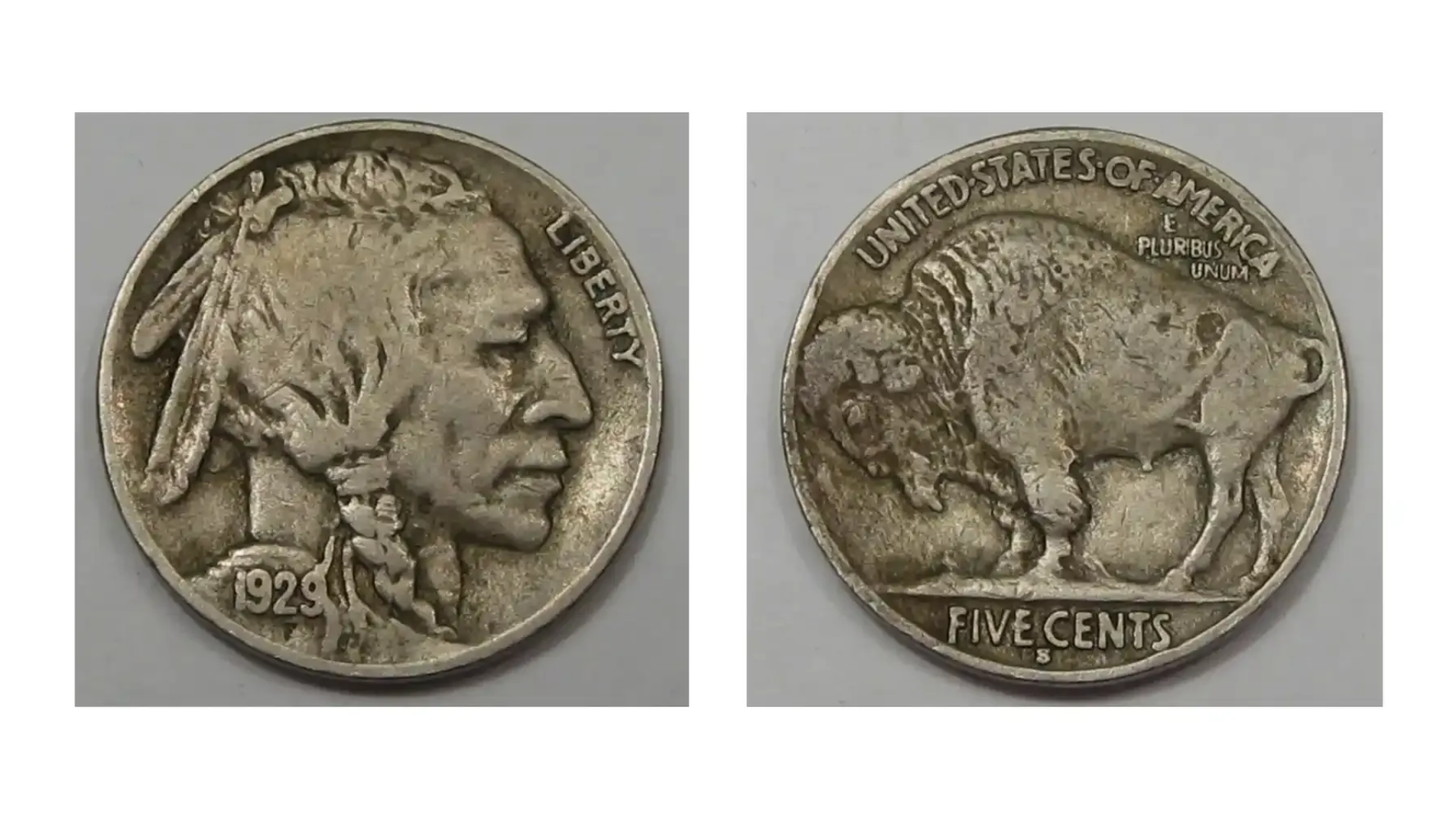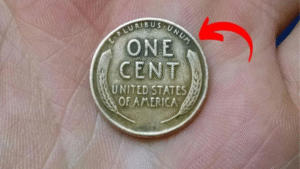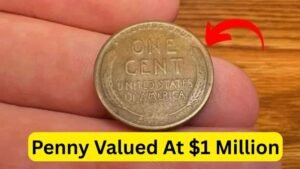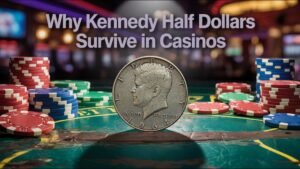Rare Buffalo Nickel: The Buffalo Nickel, also known as the Indian Head Nickel, is a five-cent coin made by the U.S. Mint from 1913 to 1938. Designed by James Earle Fraser, it shows a Native American on the front and a bison (often called a buffalo) on the back. Its bold, historical design makes it a favorite for collectors.
These coins are made of 75% copper and 25% nickel, with a diameter of 21.2 mm and a weight of 5 grams. They were produced in three places: Philadelphia (no mint mark), Denver (“D”), and San Francisco (“S”). While millions were minted, certain years, mint marks, and mistakes make some Buffalo Nickels incredibly valuable today.
Why Are Buffalo Nickels Worth So Much?
A Buffalo Nickel’s value depends on its year, condition, and any minting errors. Rare coins in excellent shape or with unique flaws can sell for hundreds, thousands, or even over a million dollars at auctions.
Key Factors That Drive Value
- Year and Mint Mark: Some years had fewer coins made, especially from Denver or San Francisco, making them harder to find.
- Condition: Coins that look brand new (called “mint state”) are worth more than worn ones. Grading services like PCGS or NGC check and certify their quality.
- Minting Errors: Mistakes like doubled designs or missing parts (like the famous three-legged buffalo) make coins rare and pricey.
How to Find a Valuable Buffalo Nickel
You could have a valuable Buffalo Nickel in your pocket or an old jar. Here’s how to check:
- Check the Date: Look at the front, below the Native American’s shoulder, for the year. If it’s worn off, the coin’s value may be lower, but faint dates can still help.
- Find the Mint Mark: On the back, under “FIVE CENTS,” look for a “D” (Denver), “S” (San Francisco), or no mark (Philadelphia). Rare mint marks increase value.
- Spot Errors: Use a magnifying glass to look for doubled text or missing buffalo legs. These errors can make a coin worth thousands.
- Examine Condition: Look for clear details and no major scratches. Never clean a coin, as it can damage the surface and lower its worth.
If you think you’ve found a gem, take it to a coin dealer or grading service to verify its value and authenticity. Handle it with gloves to avoid damage.
Top Buffalo Nickels to Hunt For
Some Buffalo Nickels are worth far more than others due to rarity or errors. Below is a table of the most valuable ones based on 2025 market trends, sourced from coin guides like PCGS and USA Coin Book. Prices are for coins in good condition (worn but readable) and mint state (nearly perfect).
| Year | Mint Mark | Good Condition Value | Mint State Value | Notes |
|---|---|---|---|---|
| 1913 | S (Type 2) | $40 | $1,200+ | Early San Francisco issue, low mintage. |
| 1916 | Double Die | $900 | $80,000+ | Doubled date and “LIBERTY” error. |
| 1918/7 | D | $700 | $60,000+ | Overdate error, “7” under “8”. |
| 1921 | S | $90 | $1,800+ | Only 1.5 million minted, scarce. |
| 1926 | S | $70 | $2,500+ | Rare San Francisco coin. |
| 1937 | D (3-Legged) | $600 | $100,000+ | Iconic error, buffalo missing a leg. |
| 1935 | Double Die Reverse | $120 | $6,000+ | Doubled “FIVE CENTS” text. |
| 1914 | D | $25 | $600+ | Early Denver issue, collectible. |
Prices are estimates and can vary based on auctions and demand. Always check with a professional for current values.
Famous Buffalo Nickel Errors to Watch For
Certain minting mistakes make Buffalo Nickels highly sought after. Here are the top errors to look for:
- 1937-D Three-Legged Buffalo: A minting error in Denver removed one of the buffalo’s front legs. Worth up to $100,000 in top condition.
- 1916 Double Die Obverse: The date and “LIBERTY” appear doubled due to a minting mistake. Can sell for over $80,000 in mint state.
- 1918/7-D Overdate: A 1917 die was reused, showing a “7” under the “8” in 1918. Starts at $800 in good condition.
- 1935 Double Die Reverse: The “FIVE CENTS” text is doubled, valued at $100 to $6,000 depending on grade.
- Off-Center Strikes: Coins with misaligned designs are rare and can fetch hundreds or more.
These errors are uncommon, so inspect coins carefully and consult a professional to confirm authenticity.
Tips for Starting Your Buffalo Nickel Hunt
Ready to start searching for these treasures? Here’s how to begin:
- Check Loose Change: Look through coin jars, piggy banks, or bank rolls for Buffalo Nickels.
- Visit Coin Shops or Shows: Dealers and coin shows often sell Buffalo Nickels at reasonable prices.
- Use Online Platforms: Check eBay or coin forums like CoinCommunity, but verify authenticity before buying.
- Store Coins Safely: Use protective holders or albums to prevent scratches and corrosion.
- Get Expert Grading: For potentially valuable coins, send them to PCGS or NGC to certify quality and boost value.
Never use chemicals or date restorers, as they harm the coin’s surface and reduce its worth.
Conclusion
Buffalo Nickels are more than just old coins—they’re pieces of American history with the power to change your life. From the rare 1937-D Three-Legged error to the valuable 1916 Double Die, these nickels are sparking excitement in 2025. Grab a magnifying glass, start checking your change, and you might uncover a hidden fortune waiting to be found.
FAQ
What makes a Buffalo Nickel valuable?
Rare years, mint marks, excellent condition, or errors like the 1937-D Three-Legged or 1916 Double Die increase a coin’s value significantly.
How can I read a worn Buffalo Nickel’s date?
Use a magnifying glass under bright light to spot faint digits. Avoid chemical restorers, as they damage the coin and lower its value.
Are all Buffalo Nickels worth money?
No, common ones in poor condition are worth 10-50 cents. Rare dates or errors in great shape can be worth thousands.
Where can I sell a rare Buffalo Nickel?
Sell through trusted coin dealers, auction houses, or platforms like eBay. Grading by PCGS or NGC can increase the sale price.
How do I know if my Buffalo Nickel is genuine?
Have it checked by a professional coin dealer or grading service to ensure it’s not fake or altered.




